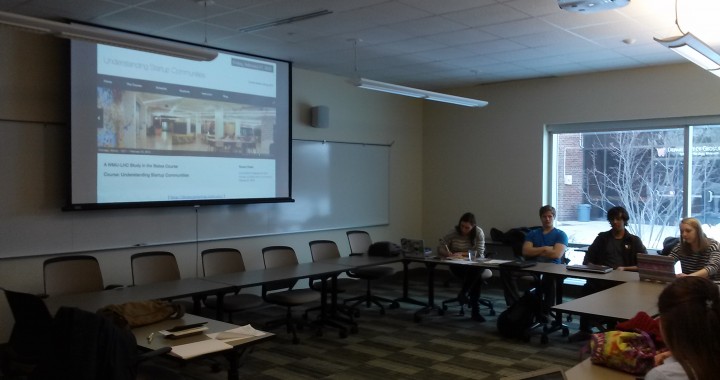Each of us read one of three books, wrote a summary, and created a short video to describe what we thought were the three most important points in the book. We then gathered at the Lee Honors College to view all of the videos, and engage in discussion about what we all thought were the most important points from all the books. The book that I read is called The Rainforest: The Secret To Building the Next Silicon Valley by Victor Hwang and Greg Horowitt. To put it briefly, a Rainforest is described as a startup community where innovation is able to thrive. The rest of this post will serve to outline the main points of our discussion about The Rainforest.
 The first thing that was mentioned was the concept of community, or the framework of a Rainforest. In this community the notions of trust, making connections, and even irrational behavior are iterated. People need to be supported in their pursuits, they need to have access to people and resources that will help them make the right decisions, and they need to think differently and look for novel approaches to problem solving.
The first thing that was mentioned was the concept of community, or the framework of a Rainforest. In this community the notions of trust, making connections, and even irrational behavior are iterated. People need to be supported in their pursuits, they need to have access to people and resources that will help them make the right decisions, and they need to think differently and look for novel approaches to problem solving.
In addition, these Rainforests need entities- people or organizations- to help shape this culture. Someone needs to lead by example and start changing behaviors. This is the keystone and they are described as being impactful, integrative, and influential. In a nutshell they are people or groups that make a real difference and can change attitudes.
The book also presents the idea of big V little c, or venture before capital, when talking about venture capital. Supporting the startup should be the priority, not just making money. They should be playing a positive sum game, not a zero sum game.
Finally we discussed the seven rules of the the Rainforest which are Thou Shalt:
- Break rules and dream
- Open doors and listen
- Trust and be trusted
- Experiment and iterate together
- Seek fairness, not advantage
- Err, fail, and persist
- Pay it forward
These rules expand upon and reiterate the concepts discussed up until this point. It is also interesting to note how many similarities this book has with the other two we discussed: Startup Communities, and The Rise of the Creative Class Revisited.
